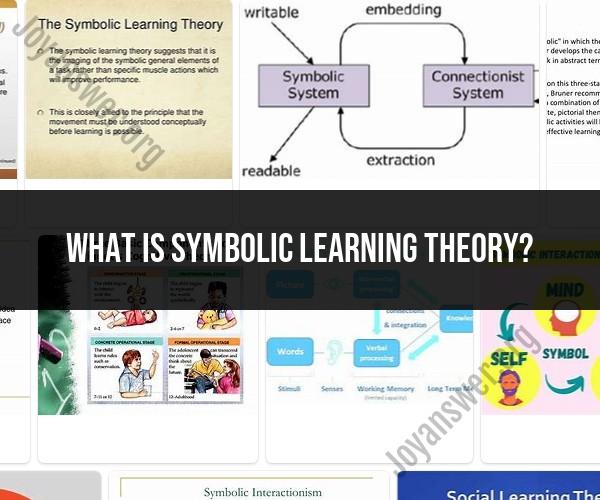What is symbolic learning theory?
Symbolic learning theory, also known as symbolic interactionism, is a sociological and psychological framework that focuses on the role of symbols, language, and communication in shaping human behavior, interactions, and the construction of meaning. It emphasizes the idea that individuals create and interpret meaning through their interactions with symbols, which can include language, gestures, signs, and other forms of communication.
Key Concepts of Symbolic Learning Theory:
Symbolic Interaction: Symbolic interactionism posits that individuals engage in ongoing interactions with others, and these interactions are mediated by the use of symbols. These symbols carry shared meanings that allow people to communicate and understand each other.
Meaning-Making: The theory highlights that individuals attach meanings to symbols based on their social and cultural contexts. The meanings attributed to symbols influence how individuals perceive themselves, others, and the world around them.
Subjective Reality: Symbolic learning theory suggests that people don't just react to objective reality; they respond to their subjective interpretation of reality. People act based on the meanings they ascribe to situations, objects, and events.
Role of Language: Language is a significant aspect of symbolic interactionism. Through language, people are able to express their thoughts, share meanings, and negotiate social interactions. Language helps shape the way individuals perceive themselves and others.
Social Construction of Reality: This theory emphasizes that reality is not an objective fact but is constructed through social interactions and shared understandings. What people consider as "real" is shaped by the meanings they collectively assign to things.
Applications of Symbolic Learning Theory:
Microsociology: Symbolic interactionism is often used to study micro-level social interactions, such as face-to-face interactions, group dynamics, and interpersonal relationships.
Identity Formation: The theory provides insights into how individuals develop their sense of self and identity through interactions with others and the symbols they use to communicate.
Labeling Theory: Symbolic interactionism is linked to labeling theory, which examines how societal labels and judgments impact an individual's self-concept and behavior.
Education: Symbolic learning theory is used in education to understand how students and teachers communicate and construct meanings in the classroom, influencing learning outcomes.
Criminology: The theory is applied to explore how individuals internalize societal norms and values, which can impact their decisions to engage in criminal or deviant behavior.
Media Studies: Symbolic interactionism is relevant to the study of media and communication, examining how media messages are interpreted, negotiated, and integrated into individuals' perceptions.
Healthcare: The theory helps in understanding how patients and healthcare professionals communicate, interpret medical information, and construct perceptions of health and illness.
In summary, symbolic learning theory highlights the central role of symbols, language, and communication in shaping human behavior and constructing meaning in social interactions. It offers valuable insights into various aspects of human interaction, identity, and social dynamics.













